Moxibustion for Animals?
Adjunct to vet acupuncture
See also: Veterinary Acupuncture
History
 The Chinese term, chen-chiu, implies ‘needle-moxa’. This is really a more accurate term for the branch of ancient oriental medicine than is described by our modern word, acupuncture, which gives an impression of needling as the dominant issue. Modern Western culture has adopted acupuncture, as needling, setting aside the potentially messy and less convenient moxibustion techniques, that are so integral to the original concepts. Using one without the other is a little like a duet with one instrument.
The Chinese term, chen-chiu, implies ‘needle-moxa’. This is really a more accurate term for the branch of ancient oriental medicine than is described by our modern word, acupuncture, which gives an impression of needling as the dominant issue. Modern Western culture has adopted acupuncture, as needling, setting aside the potentially messy and less convenient moxibustion techniques, that are so integral to the original concepts. Using one without the other is a little like a duet with one instrument.
The origin of the use of heat as therapy is lost in the mists of time. It predates history and it predates needling and the understanding of acupuncture points. The use of herbs likewise preceded human records. Moxibustion combines both, integrating them with the theories of meridians, Qi and yin-yang (Tsang-fu).
Practical Application
Moxibustion is usually the application of heat, through the burning of specific herbs (e.g. mugwort: Artemisia vulgaris), to replenish body heat (yang). It counteracts the effects of ‘cold' and ‘dampness' on the body and it serves to replenish and revitalise a weakened or depleted body. It is supplying a direct ‘injection’ of heat energy, into specific points, to aid rebalancing, whereas needling is simply moving that energy around the body.
 We burn moxa powder or moxa rolls and we have special moxibustion needles, for the application of this ancient technique. Moxibustion can be applied directly or through needles.
We burn moxa powder or moxa rolls and we have special moxibustion needles, for the application of this ancient technique. Moxibustion can be applied directly or through needles.
In animals, due to the ubiquity of hair or fur, use of this technique is somewhat restricted when compared to the practice in humans. There is also the ever-present risk of lingering fire-risk, in straw or other inflammable bedding material. Also, the smoke may be irritant to eyes, if the area is not well-ventilated. Some might even be embarrassed by the comments from clients, about the smell in the consulting room. Whacky Baccy jokes abound.
Despite these draw-backs, it is extremely well-accepted by animals in equine acupuncture, canine acupuncture or feline acupuncture and is an important addition to the vet acupuncturist's armoury.
The Law
The Veterinary Surgeons Act 1966 restricts the treatment of animals (other than your own) by anyone other than a fully qualified vet.
| Homeopathy | Acupuncture | Herbs | Chiropractic | Natural Feeding |
